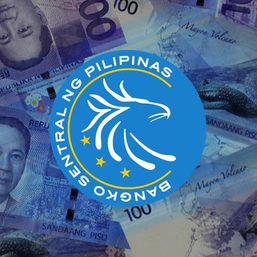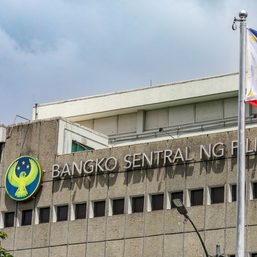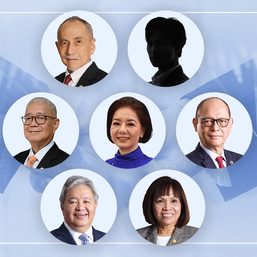SUMMARY
This is AI generated summarization, which may have errors. For context, always refer to the full article.
The Philippine central bank has unleashed several policy tools to encourage banks to lend to consumers and businesses badly needing capital to climb out of the recession. But banks are simply not biting and are now even more cautious.
Preliminary data from the Bangko Sentral ng Pilipinas (BSP) showed that outstanding loans of commercial and universal banks eased to 2.8% in September from the 4.1% in August.
The easing of loan growth comes as soured loans rise. Non-performing loans soared by 60% to P364.67 billion as of end-September, higher than the P227.6 billion a year ago, and 20% higher than the P304.99 billion as of end-August.
Gross non-performing loans (NPL) ratio stood at 3.4% as of end-September, the highest in over 7 years. The BSP projects NPL ratio rising to 4.6% by end-2020.
Loans are considered non-performing when consumers do not pay at least 30 days after the due date.
Meanwhile, restructured loans skyrocketed by 197% to P125.5 billion in September.
Latest data from the BSP’s Senior Bank Loan Officers’ Survey showed that 69.4% of banks tightened lending standards for enterprises during the 2nd quarter of 2020.
This is the first time that banks reported tighter credit standards following 44 consecutive quarters of broadly unchanged credit standards.
“The general decline in bank growth partly reflects banks’ reduced tolerance for risk, decline in loan demand due, in turn, to weak business and income prospects, and observed shift by non-financial corporates to alternative sources of funds,” the BSP said.
The Philippine government is relying on banks to help shore up the economy by lending to businesses needing capital to restart.
The BSP delivered a surprise cut in bank reserves last July, a liquidity measure that frees up around P2 trillion for banks to lend.
But instead, banks opted to play safe and keep cash in their vaults.
For ING Bank Manila senior economist Nicholas Mapa, the trend simply means that at this point, no matter what the BSP brings out, overall investment activity “will be on ice” without action on the fiscal side.
“BSP has been busy in the past few weeks, rolling out a potent mix of conventional and unconventional easing measures to support the recovery. Despite all these efforts, low interest rates, bond market presence, and copious liquidity, it appears that monetary policy has run its course with bank lending failing to respond to this very aggressive bouts of easing,” Mapa said.
“From here, we can only expect downward trends in lending across most sectors to fall, households into single digits soon, and overall lending to edge closer to zero with the economy in [a] pandemic.”
President Rodrigo Duterte’s economic team is keeping fiscal measures quite modest, with Finance Secretary Carlos Dominguez III saying they are “keeping [their] powder dry for next year as well.”
Dominguez noted that whatever stimulus package the government will roll out, it has to be “affordable.” – Rappler.com
Add a comment
How does this make you feel?







![[Time Trowel] Evolution and the sneakiness of COVID](https://www.rappler.com/tachyon/2024/02/tl-evolution-covid.jpg?resize=257%2C257&crop=455px%2C0px%2C1080px%2C1080px)


There are no comments yet. Add your comment to start the conversation.